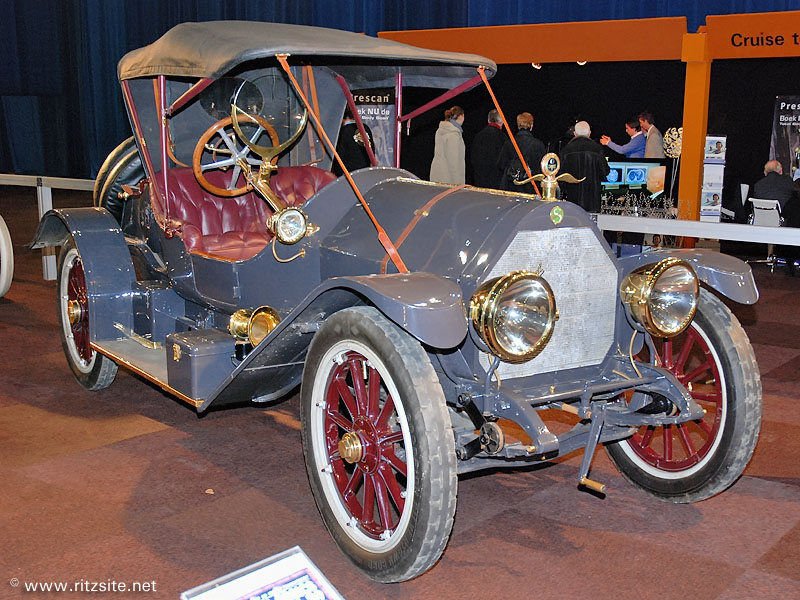|

Speedwell Model 12-H - Speed Car body - model year 1912
Asked about the typical American sports roadster those interested in the early days of automobile manufacture will undoubtedly think of the Mercer Raceabout and the Stutz Bearcat. There was however a manufacturer in Dayton, Ohio which preceded those icons with wonderfully constructed and rapid roadsters. It's name was Speedwell and it was quite successful during its relatively short lifespan.
Speedwell was founded in 1907 by Pierce Schenck and the name of the make indicated its ambition. After a few years Speedwell established itself as a manufacturer of quality cars, characterized by meticulous attention to detail and elegant designs. Especially the open models caught the attention of the public, of which the torpedo body style with concealed door hinges and horn under the hood was ahead of its time. The various roadster models however made the Speedwell name known throughout the United States.
Most Speedwell models were based on a single engine and chassis combination, which was suited for all kinds of bodywork. During its heyday, from 1909 till 1912, all Speedwells were powered by a 4 cylinder engine that produced 50 hp which was plenty if you compare it to the 22 hp of the contemporary Ford Model T for instance. The roadster bodies came in 2 and 4 seater configurations and were simple lightweight constructions consisting of an engine cover, the seats and the fenders. Usually there were no doors. Combined with the powerful engine this resulted in remarkably fast cars for that era, capable of doing speeds up to 60 mph (100 kph).
One of the most impressive roadsters made by Speedwell was this 1912 Model 12-H Speed Car, a 2-seater with a large gas tank behind the seats inspired by Grand Prix racers. It was not only fast but also luxurious, with abundant brass trimming, small doors and extra lights. Even now it's still a good looking car, well proportioned with fine details and simple but effective lines; a pleasure to look at from all angles. Unfortunately it also sort of marked the end of Speedwell since its founder left the company that same year to pursue other ambitions.
The people that continued Speedwell chose to introduce a rotary valve engine design by Cyrus Mead, next to the regular poppet valve engine design. It wasn't a success and a further misfortune was that its designer was killed in a car accident before he had the chance of further developing the engine. And when a flood hit the Dayton factory in 1913 the company found itself in serious financial problems. Ultimately bankruptcy was declared in 1915, by then about 4000 Speedwells had been made in total.
Remarkably the first Stutz Bearcat, the 1912 Series A, had the same specifications as the Speedwell Model 12: a 50 hp 4-cylinder engine in a 120 inch (305 cm) wheelbase chassis. It was however a less refined and lower priced car. The Mercer Model 35 Raceabout, introduced for the 1911 model year, had a similar price as the Speedwell but was slightly smaller, had a less powerful 32.4 hp 4-cylinder engine and, more importantly, was a more radical lightweight racing car. Both these cars made a more lasting impression however and gradually pushed away the memory of the Speedwell roadsters.
This doesn't mean however that the few remaining Speedwell cars are invaluable. The wonderful Speedwell shown here changed hands in 2008 for no less than $ 506,000 which was some $ 200,000 more than was estimated. It's an amazing price but then, when you see it in real life and look at the beautiful workmanship, it's probably worth it. A true showpiece for the American brass era that deserves to be remembered.
© André Ritzinger, Amsterdam, Holland
|
